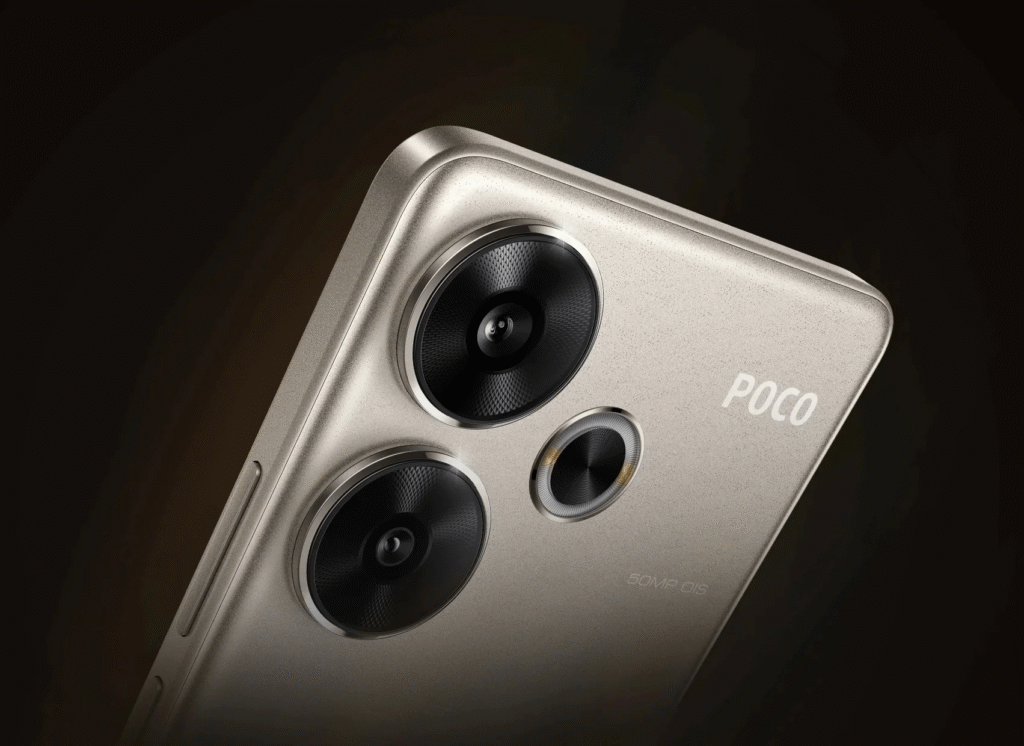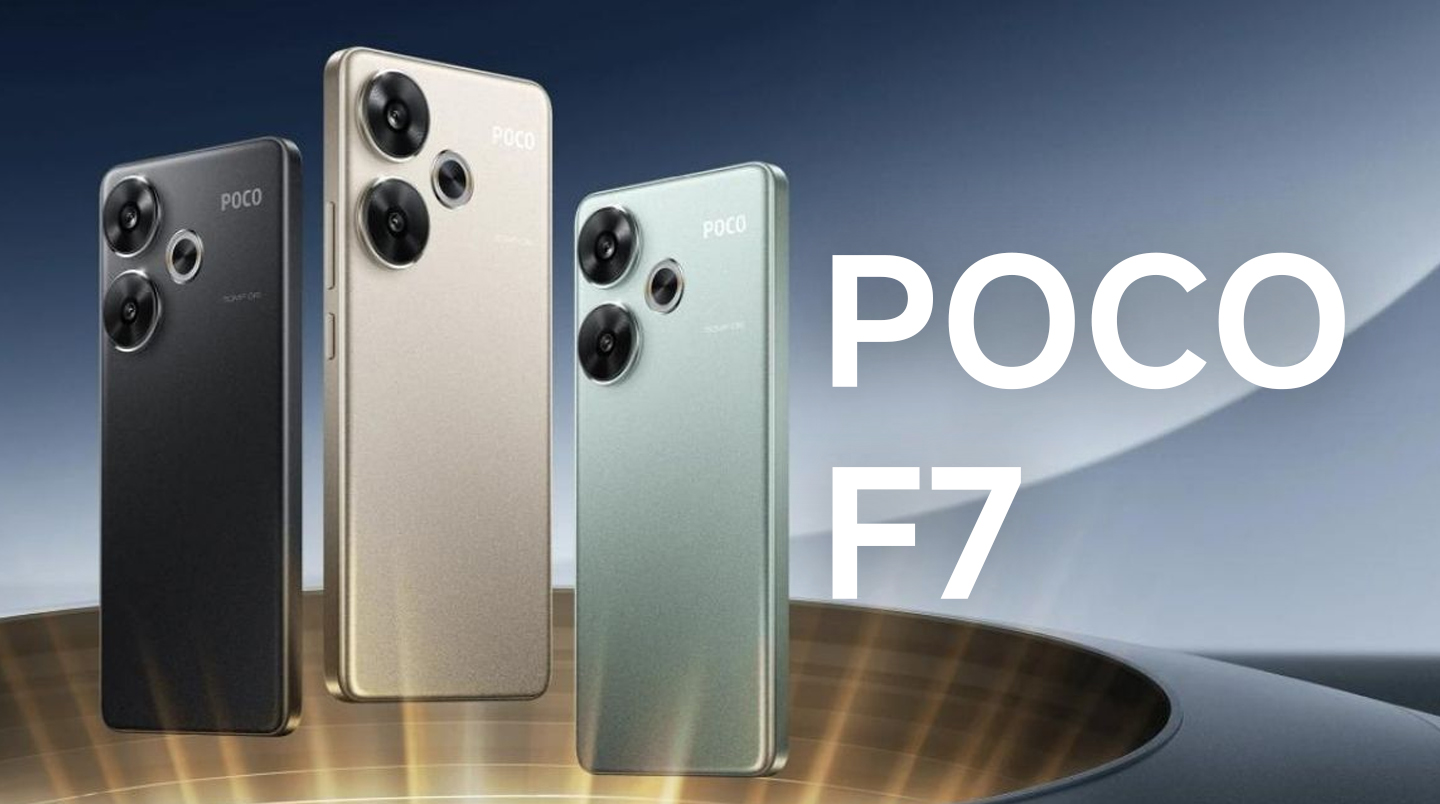1️⃣ Introduction
The Poco F7 Pro, launched early 2025, aims to redefine “budget flagship” territory. With Snapdragon 8 Gen 3, a stunning 2K 120 Hz AMOLED panel, massive battery, and gaming-grade cooling—all under ₹50K / $600—it challenges more expensive contenders. We tested every angle to find out if it truly lives up to the hype.

🔍 Full Specs Table
| Feature | Poco F7 Pro |
|---|---|
| Display | 6.67″ AMOLED, 1440×3200, 120 Hz, Dolby Vision, HDR10+, 3200 nits peak |
| Processor | Snapdragon 8 Gen 3 (4 nm) |
| RAM & Storage | 12 GB LPDDR5X + 256/512 GB UFS 4.1 |
| Rear Cameras | 50 MP main (OIS) + 8 MP ultrawide |
| Front Camera | 20 MP selfie |
| Battery & Charging | 6000 mAh, 90 W wired (~35 min full) |
| Cooling System | LiquidCool 4.0 + IceLoop vapor |
| OS & Features | HyperOS 2 (Android 15), Wi‑Fi 7, IR, IP68 |
2️⃣ Display & Audio
The 2K AMOLED screen dazzles—sharp, vibrant, smooth with Dolby Vision HDR and 120 Hz refresh. Rated at 3200 nits peak, it’s outdoor-ready, though some reviewers found it slightly dimmer in bright sun . It’s easy on the eyes, certified flicker-free, and responsive even to wet fingers, backed by a fast ultrasonic in-display fingerprint reader. Stereo sound is solid, though headphones enhance the experience.
3️⃣ Performance & Gaming
Snapdragon 8 Gen 3 delivers flagship power. AnTuTu scores hover around 1.6 million, with Geekbench showing top-tier multi-core results. But gaming is where it shines—titles like Genshin Impact, Honkai Star Rail, and PUBG hit 60–120 FPS consistently, even at high settings, thanks to LiquidCool 4.0 and WildBoost optimization. Sustained gaming temps stay in the 40–45 °C range—impressive for a mid-ranger.

4️⃣ Cameras & Video
The dual-camera setup features a 50 MP Light Fusion 800 sensor (OIS) and 8 MP ultrawide. Daylight shots are sharp and vibrant, while low-light performance impresses. Video goes up to 8K—with gyro-EIS for stabilization. Ultrawide is usable but underwhelms in darker scenes . If telephoto is a must, upgrade to the F7 Ultra.
5️⃣ Battery & Charging
The 6000 mAh pack delivers around 16 hours PCMark runtime, roughly 14 hours daily mixed usage—solid endurance reddit.com. Ultra-speed 90 W charging tops you off in ~35 minutes—zero need to slow down. HyperOS also maintains battery health over time.
6️⃣ Software, AI, & Extras
HyperOS 2 is streamlined and slick—with AI tools like image enhancement and Gemini integration. Features include floating multi-window, IR blaster, NFC, Wi-Fi 7, and IP68 dust/water resistance. Software support includes 4 years of updates—strong for the segment.
7️⃣ Drawbacks
- No telephoto lens (upgrade to Ultra for that).
- Thermals ramp under continuous heavy gaming, though cooling handles it well.
- No wireless charging—a minor sacrifice at this price.
- Some ads/Bloat may show up—but they’re removable
✅ Pros & Cons
👍 Pros
- Flagship-grade CPU & GPU power
- Gorgeous, high-refresh 2K display
- Exceptional gaming performance & cooling
- Massive battery + rapid charging
- Robust build & clean new HyperOS experience
👎 Cons
- No telephoto lens or wireless charging
- Slight brightness/camera limitations outdoors
- Occasional thermal throttling under load
🏁 Verdict
The Poco F7 Pro redefines “budget flagships” in 2025 with premium performance, immersive display, long battery, and gaming-ready thermals. Flagship-level specs at under ₹50K / $600, this is easily one of the best value phones—especially for gamers and power users.
If you need telephoto, look to the F7 Ultra. But if balanced raw power, screen quality, and endurance are your priority—this is an unbeatable pick.
🔗 Outbound Links
Read More:
https://gurutech.blog/realme-gt-6-pro-specs-price-launch-date/
